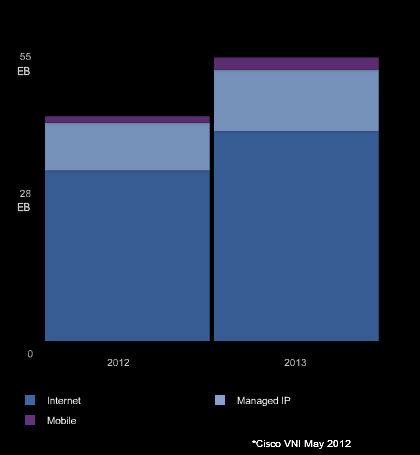From almost any angle, businesses are under pressure. Connected customers are out-flanking business efforts to control the flow of goods and services and manage relationships in an increasingly connected economy. The global economy continues to struggle under the weight of misguided policies, sovereign debt and an entitled corporatocracy that aims to “maximize the status quo” . As Seth Godin points out, this industrial focus on our economy has a limited future:
Today’s industrialists define our economy, but they offer very little promise for tomorrow. They’ve long bought ads to polish their image, but mostly work to alter the culture in ways that will ensure they’ll get just a little bit more yield out of each of us.
But as Mary Meeker’s 2012 recap on the state of the internet suggests, disruption is the new normal. And when it comes to digital, disruption comes in many colours.
Five Impacts of Digital Media
Writing on the invention of the printing press, Elizabeth Eisenstein suggested there were five impacts that transformed society of the time. In 2012, we too can see these impacts playing out in our personal and professional lives (and all the spaces in-between):
- Experts coming under pressure from new voices who are early adopters of new technology
- New organisations emerging to deal with the social, cultural and political changes
- There is a struggle to revise the social and legal norms — especially in relation to intellectual property
- The concepts of identity and community are transformed
- New forms of language come into being
- Educators are pressured to prepare their students for the newly emerging world
Nielsen Social Media Report 2012 signals the end to the industrial age of marketing
Showcasing each of these five impacts, the Nielsen Social Media Report for 2012 signals not only that “social media has come of age”, but that digital has truly arrived as a force that can no longer be ignored. Once, the staunchest defender of an analogue ratings system, Nielsen’s own transformation confirms that the industrial age of marketing is closing and that a new era has arrived.
Marketers are not only under pressure to respond to the mega trends outlined above – they must also address the five pillars of enterprise disruption which are playing havoc with business strategy and engagement tactics. These days marketers must consider:
- A strategy of mobile only, not mobile first: Not only are mobile technologies different in form and shape. They are taking over our patterns of adoption and consumption. With mobile devices already outselling PCs in India and China, it is expected that this change will impact Australia, the US and Europe in 2014. With long lead times and a dearth of digital skills within organisations, marketers will need to move now to serve their connected consumers who prowl the digital landscape. And rather than thinking mobile first, marketers need to think mobile only
- Social is mobile: Mobility is not only an issue for interruption – or even permission based marketing. It is an issue for social engagement platforms. App usage now accounts for more than a third of social networking time. There is still significant space for growth – and marketers will need to understand how this mobile+social dimension impacts the customer experience
- Social TV is disrupting broadcast: While the focus is currently on Twitter as a social TV enablement platform, this is an area ripe for disruption. Just as publishers were slow to respond to digital and are now facing significant business model challenges, broadcast networks have also been slow to invest, experiment and learn from social technologies. This has opened the door to innovative startup who will continue to outpace the industrial age broadcasters
- The buyer’s journey has changed forever: The marketing funnel as a concept is over 100 years old. In a digital world, its linear process is also a mark of the industrial marketing era. It’s time for marketers to re-cast the marketing funnel for consumer engagement.
Download the Nielsen report and let me know what you think. Will it change the way you plan and execute your marketing efforts in 2013?



